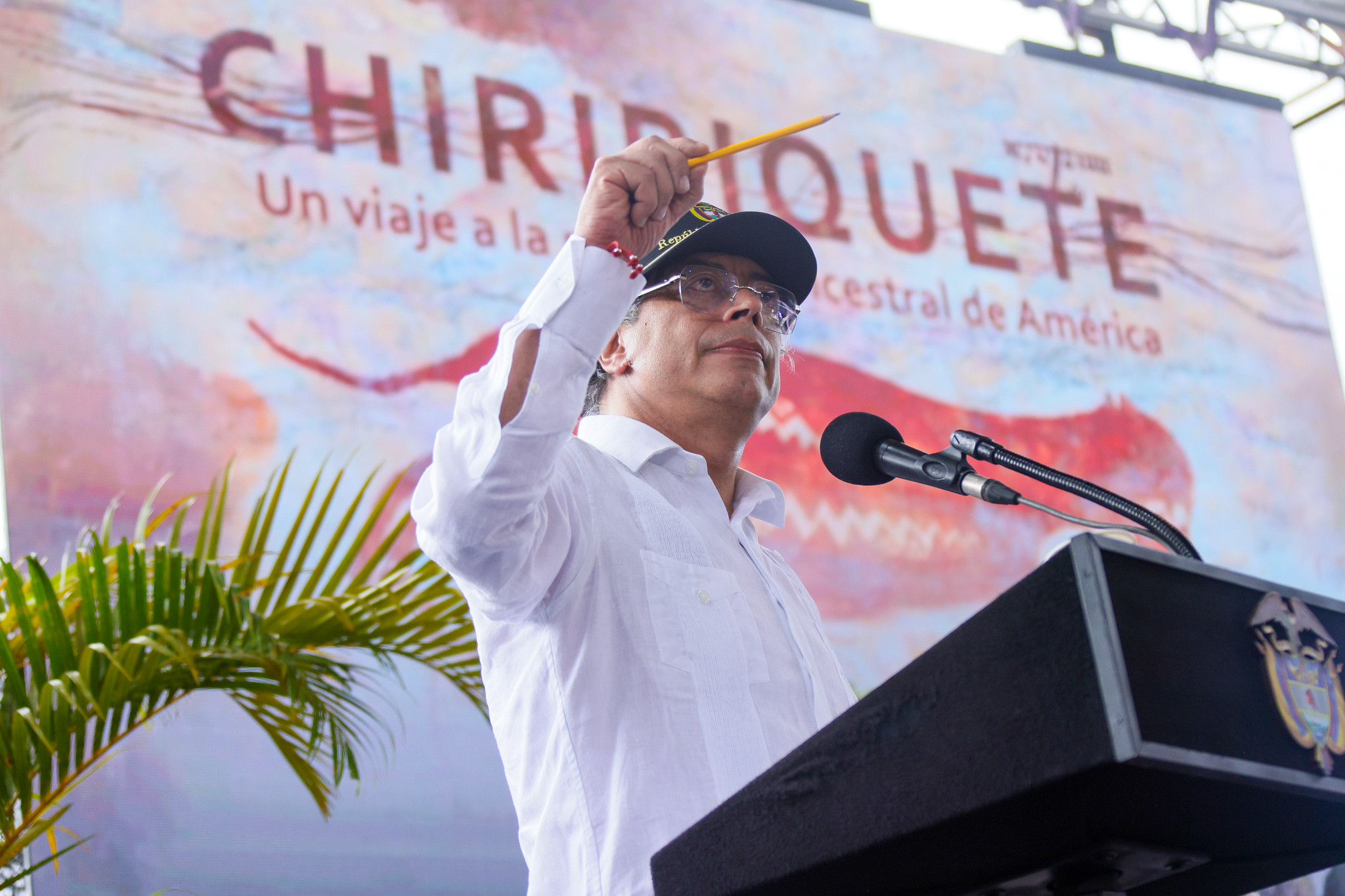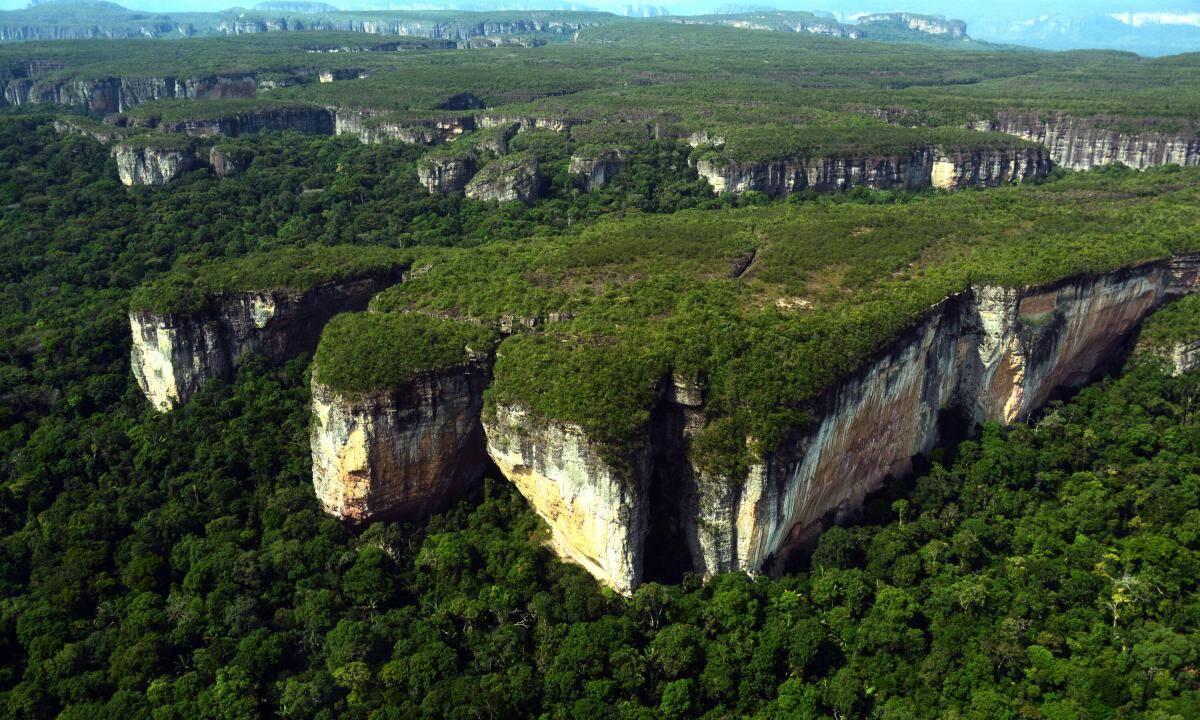Nobody discovered anyone: the magic of Chiribiquete

The Serranía de Chiribiquete National Natural Park is twenty-four times the size of Bogotá, Colombia's capital. Its area of nearly three million hectares is larger than the departments of Huila and Valle del Cauca.
It has a history of more than 20,000 years, but we only learned of its existence 39 years ago.
It includes the municipalities of San José del Guaviare, Miraflores, and Calamar , in the department of Guaviare; and San Vicente del Caguán, Solano, and Cartagena del Chairá, in Caquetá.

Chiribiquete National Park is located in the western part of the Guyanese Shield. Photo: Martin Cicuamia - National Park of Colombia
In 2018 , it was declared a World Heritage Site and is considered one of the largest and most biodiverse environmental reserves on the planet.
The world only learned of this place at the end of the 20th century, thanks to the Bogotá anthropologist Carlos Castaño-Uribe , who on a stormy November afternoon in 1986 , was trying to reach Amacayacu National Park and accidentally stumbled upon a huge plateau adorned above by a strange and magical rock system that caught his attention. Castaño-Uribe, without knowing it, had just discovered this natural wonder.
Castano Uribe is "The Discoverer of Chiribiquete," as journalist Fernando Millán famously pointed out in an extraordinary report published in Credencial magazine. President Gustavo Petro has renamed this environmental wonder "The Sistine Chapel" of American history.

President Petro in Chiribiquete. Photo: Joel Gonzalez. Presidency
Chiribiquete is once again making global news. Its history and significance will reach audiences in several countries thanks to the Colombian public media system, RTVC, in partnership with Arte France, which brought the documentary Chiribiquete: Traces of the Past to television and the major leagues of the audiovisual world. It was presented by President Petro last Saturday, June 14, at the "La Esperanza" Coliseum in San José del Guaviare, 130 kilometers from the gateway to this magical world.
There, before an audience of farmers, indigenous people, settlers, but also scientists and researchers, at 36 degrees in the shade, with humidity that stuck clothes to their bodies, this documentary was screened, showing the magnitude of what Chiribiquete means in the history of humanity. We Colombians have had the Holy Grail of the origins of humanity, without realizing it, in a verdant department that war has turned into its trench for decades, and where Chiribiquete has miraculously remained intact, blessed by the Jaguar and nature.
Until the discovery of Chiribiquete, only a small indigenous community called Carijona was known, which is believed to have lived in its foothills, but which disappeared during the rubber boom , between 1907 and 1930, when the famous Casa Arana, a rubber company from Peru , unleashed a war of blood and fire against the indigenous people, in order to displace them from their ancestral territory.

The National Park, known relatively recently, is a place of myths and legends. Photo: EL TIEMPO Archive
It wasn't until José Eustasio Rivera, through his masterpiece, The Vortex, told the world about the atrocities suffered by our indigenous people in the south of the country, throughout the Amazon, that the world turned its attention to that area again and peace and tranquility returned to the entire Mother Forest. Even a commission of the British Parliament intervened to save our natives from the barbarism unleashed by the predatory frenzy of a commercial house.
Experts and researchers believe the Chiribiquete mountain range may hold valuable information demonstrating that the first human beings in the Americas lived and settled there. Hundreds and thousands of red petroglyphs (immortalized rock paintings) have been found on the walls of its rock formations (the famous "Tepuis," up to 900 meters high), which demonstrate the presence of humans. The great mural of history.
There are more than 200,000 cave drawings and paintings in which the presence of the jaguar predominates, the symbol of power and spirituality of the native people. A treasure that Colombia must protect in the name of humanity. Chiribiquete is more than an immense and incalculable biological wealth; it is, as shamans once called it, "the center of the world, where the echoes of silence are sheltered."

EL TIEMPO flew over the La Macarena, Tinigua, and Chiribiquete National Parks. Photo: Edwin Caicedo. EL TIEMPO
It is still unknown whether the theory that humanity began in Chiquiribete is true. What is certain is that the traces of Latin America's first settlers are in this sacred place. Much more sacred than the Sistine Chapel.
If it were proven that humanity emerged in Chiquiribete, it would change the worldview, the history books would have to be rewritten, and humanity's worldview would change. As President Petro put it in San José del Guaviare, "They didn't discover us. We were already here, at least 20 millennia ago, and Chiribiquete proves that."
The Sistine Chapel in Rome houses important works and frescoes by several Renaissance painters, including Michelangelo's Last Judgment. The Sistine Chapel in Guaviare and Caquetá houses thousands of petroglyphs made by the ancestral hands of our distant relatives.
Michelangelo's The Last Judgment is one of the great works still in Rome's Sistine Chapel. Our native works don't have as many famous people behind them, but they do have the best surname in the world: Chiribiquete , the rock art work that has survived 20,000 years of solitude.
eltiempo





